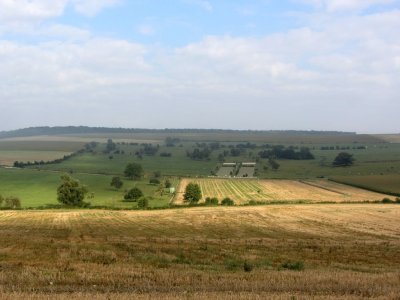
memorials to the soldiers of the Grande Guerre are everywhere in this area... |
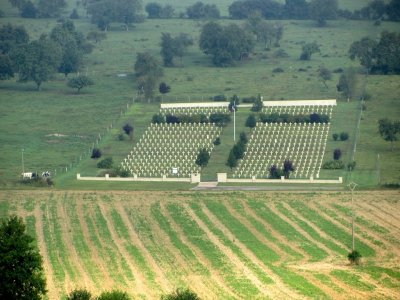
...here, a French military cemetery near Brieulles-sur-Meuse |
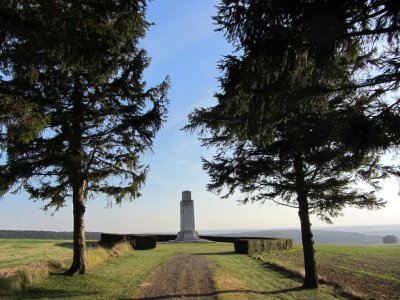
on the Grande Montagne above Sivry-sur-Meuse... |
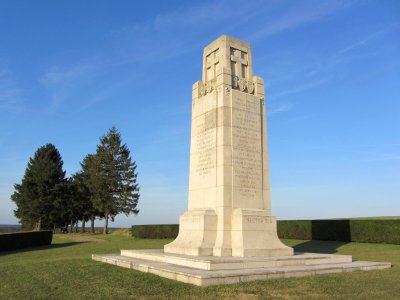
...an American memorial to soldiers of the 316th Infantry of the 79th Division AEF |
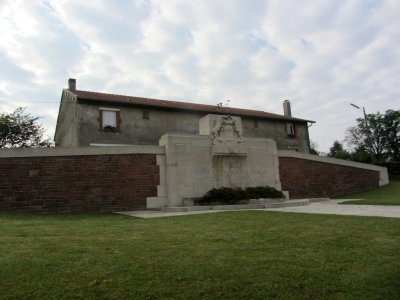
a monument erected by the state of Pennsylvania at Nantillois |
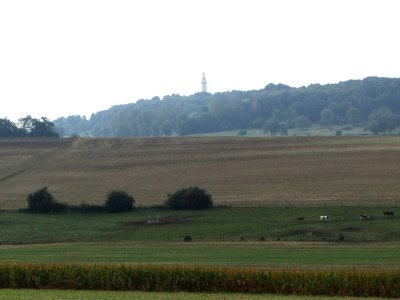
in the distance, the American monument on the butte of Montfaucon-d'Argonne |
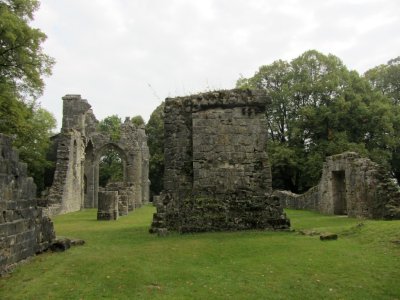
the ruins of the monastery on Montfaucon; in front, a former German observation tower made from stones of the church |
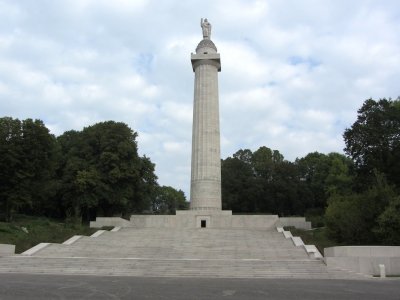
the Montfaucon monument |
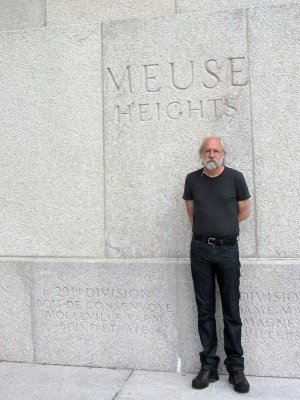
Jay next to a marker for the 29th AEF, his grandfather's division... |
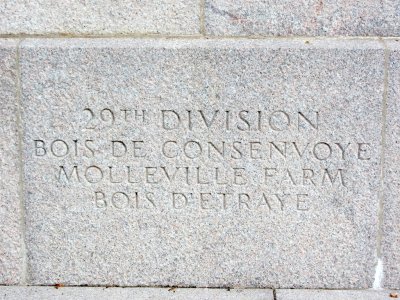
...with notes of where they fought |
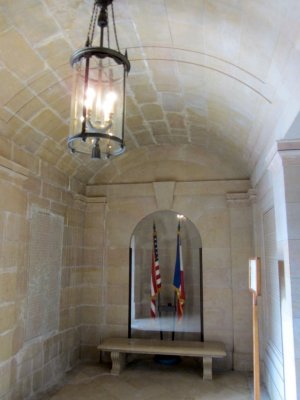
inside the monument |
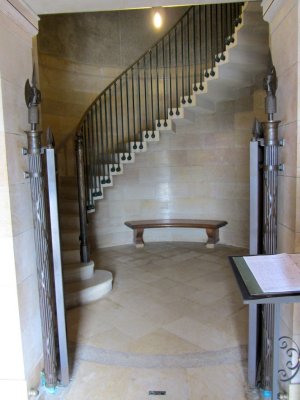 |
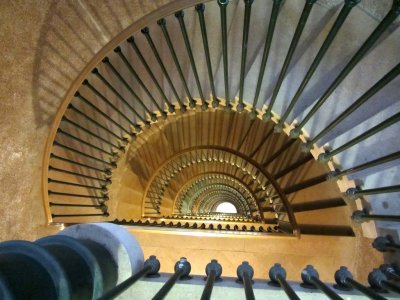 |
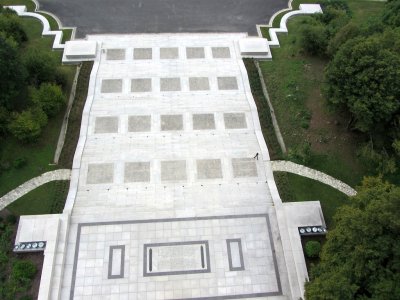
from the observation deck, Marla looks rather tiny |
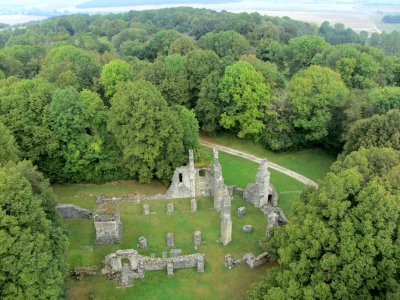
looking out over the church ruins... |
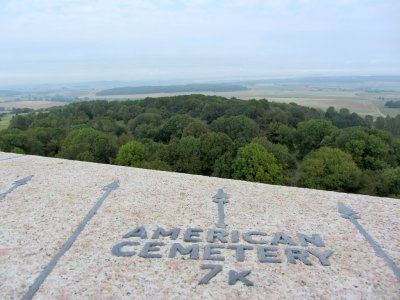
...and in the distance, the American cemetery |
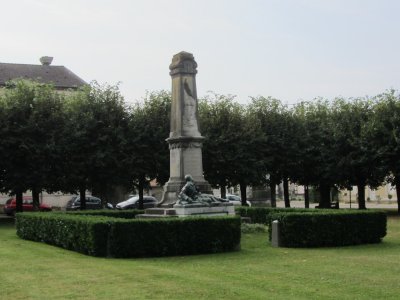
in the rebuilt village of Montfaucon, France honors its dead... |
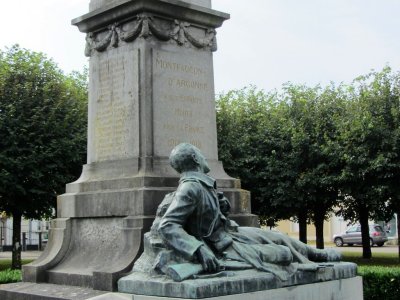 |
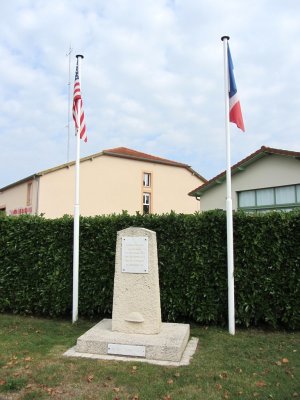
...and thanks the 'Sammies' from the US who fought there in 1918 |
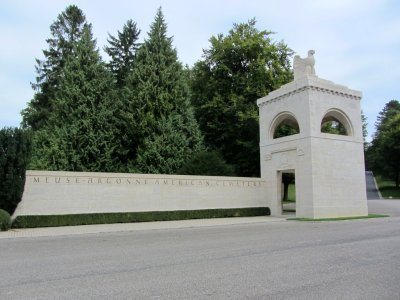
at the American military cemetery in Romagne-sous-Montfaucon |
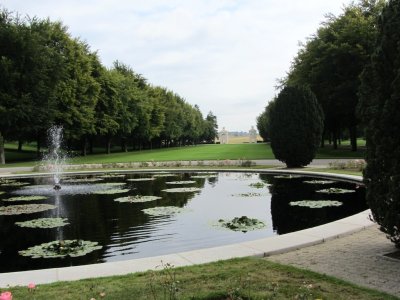 |
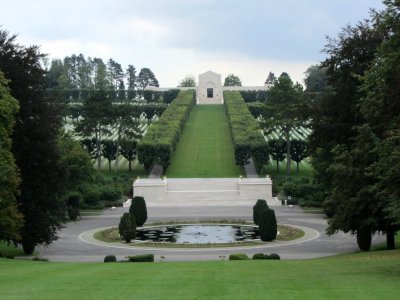 |
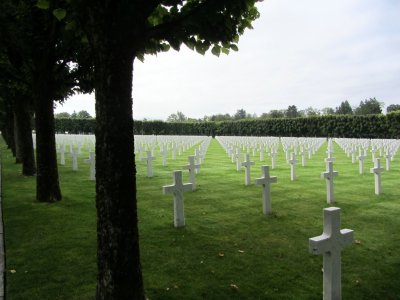
more than 14 thousand soldiers are buried here... |
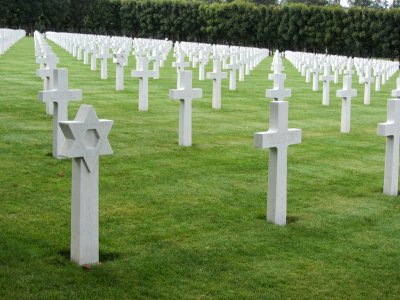
...in the largest American cemetery abroad... |
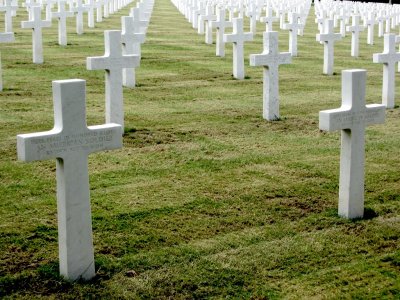
...including many whose identity cannot be known |
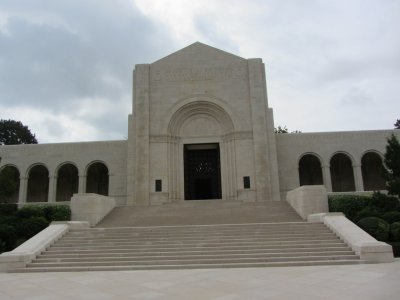
at the top of the site, a sober memorial |
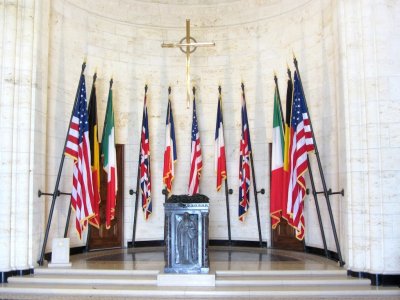 |
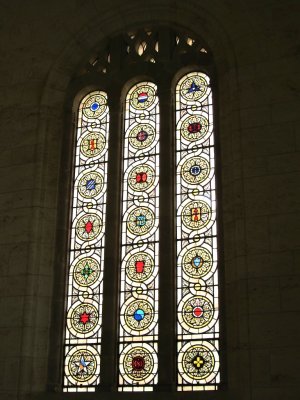
stained glass windows include the insignia of the divisions (the 29th is at center, second row from the bottom) |
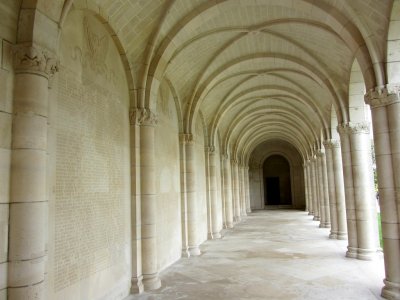
on an exterior wall, the names of those whose bodies were never found |
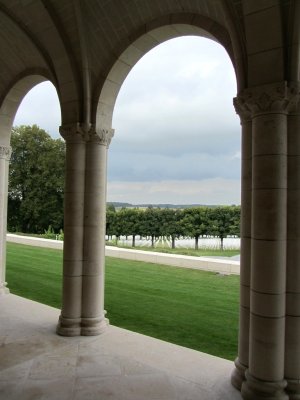 |
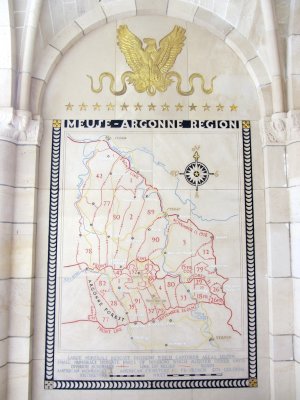
a map of the final engagements by division |
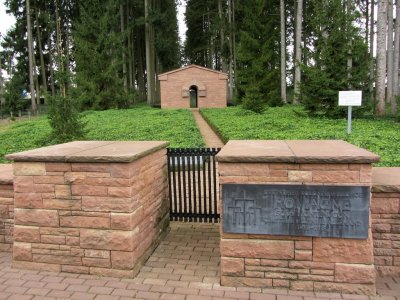
just outside the village, a well-kept German military cemetery... |
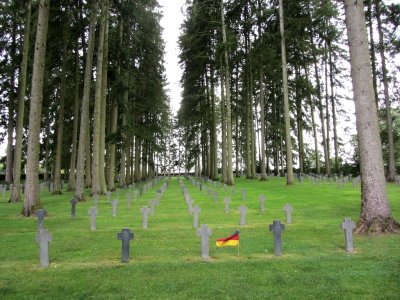
...one of many nearby |
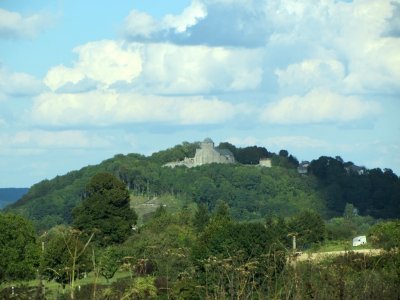
we are staying in Dun-sur-Meuse, a riverside village with a 12th-c. church on the hill above |
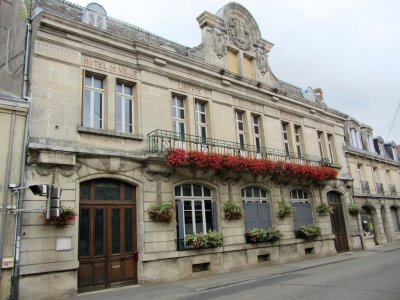 |
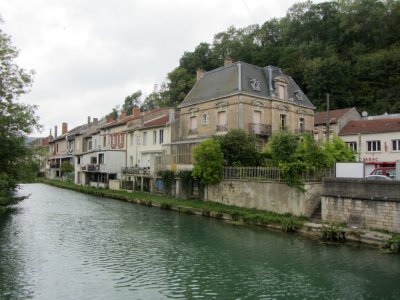 |

the bridge in town is named for General Pershing... |
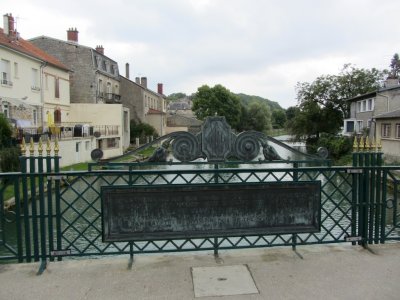
...and carries a remembrance of the 5th Division AEF which pushed the front forward thru here |
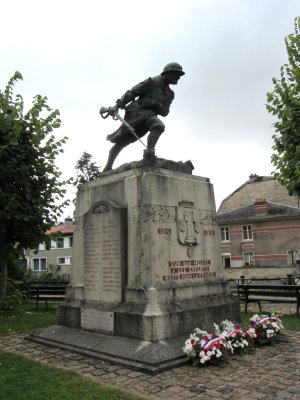
at this same location, the French divisions who fought here are also remembered... |
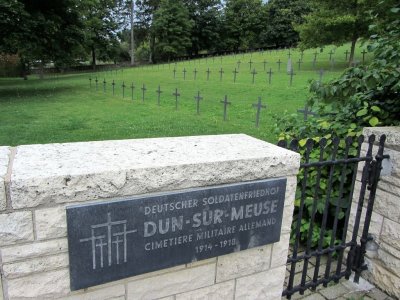
...as well as the German soldiers who died here... |
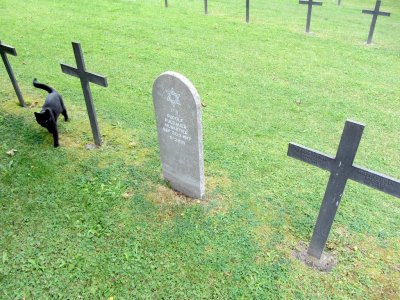
...in a small but tidy cemetery |
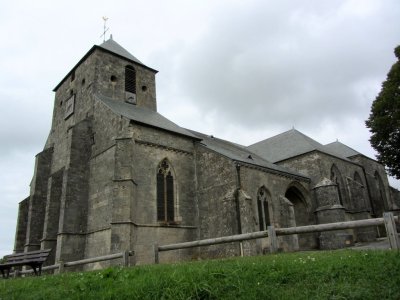
above the village of Dun-sur-Meuse, the antique church |
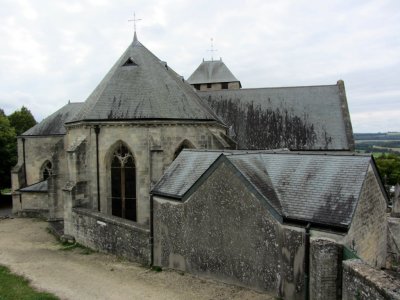 |
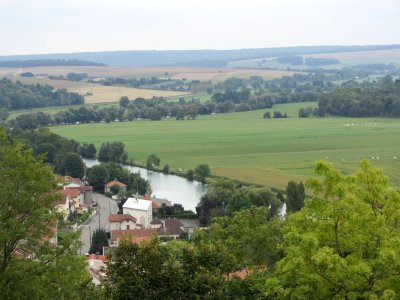
the church has an outstanding view down the Meuse river valley |
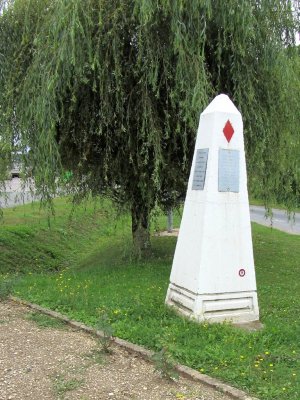
one of many markers for the US 5th Division along the Meuse |
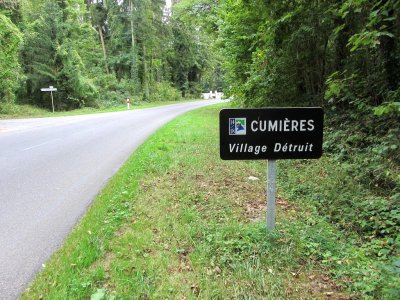
with his unit, the 104th Engineers, Jay's grandfather passed thru Cumières... |
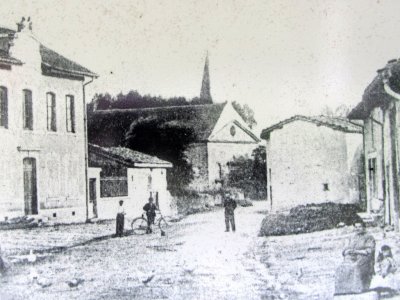
...which before the war had been a village of 200+ people... |
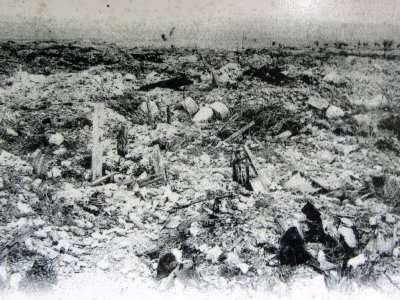
...but by 1917 was one of eight villages in the 'red zone' completely destroyed... |
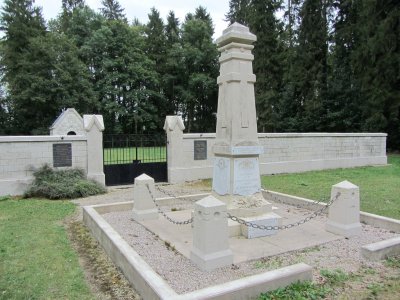
...and is today memorialized by a marker made from stones of the leveled buildings |
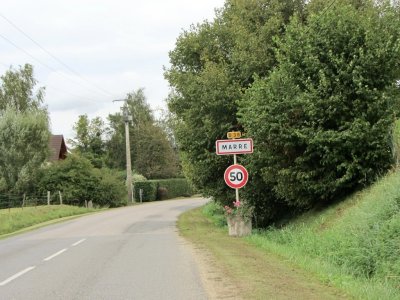
Marre, another village where Jay's grandfather worked... |
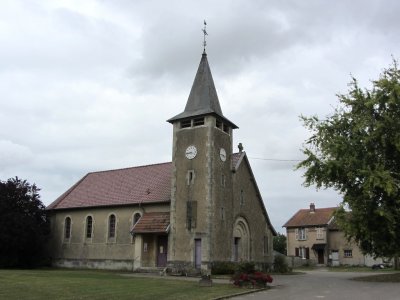
...today, a quiet place |
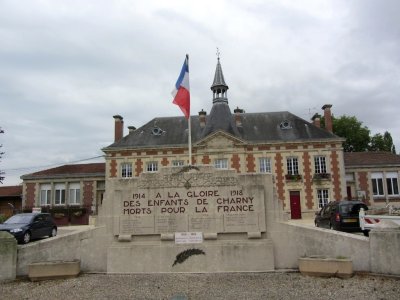
Charny-sur-Meuse, another beautiful village where Jay's grandfather served |
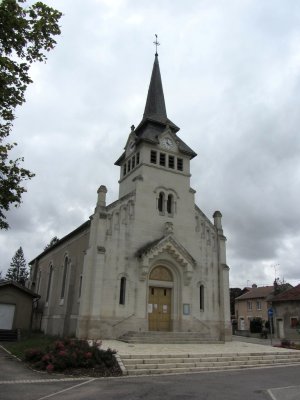 |
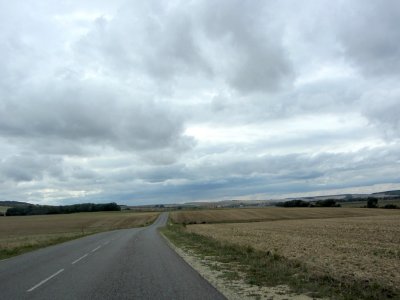
on the route to Chattancourt, part of a major road-building effort by the 104th Engineers... |
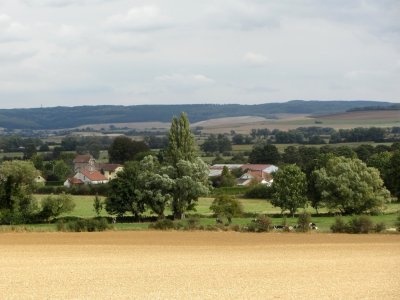
...to support the movement of American troops and equipment to the front |
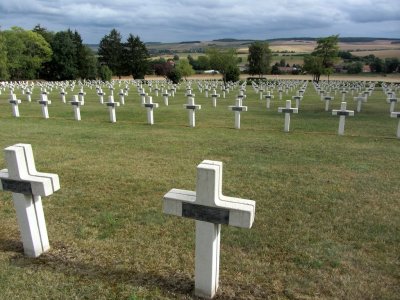
but also the site of repeated French battles in the years before... |
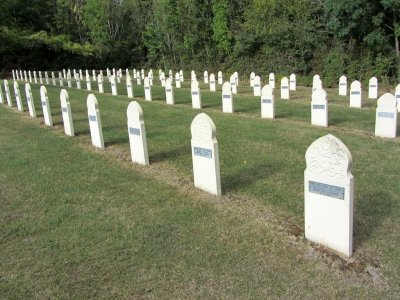
...leaving many dead... |
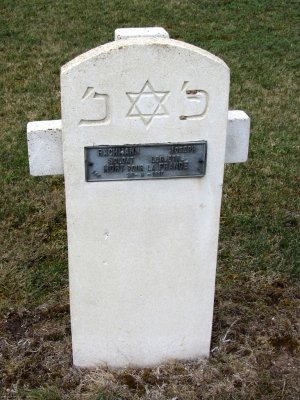
...of all faiths |
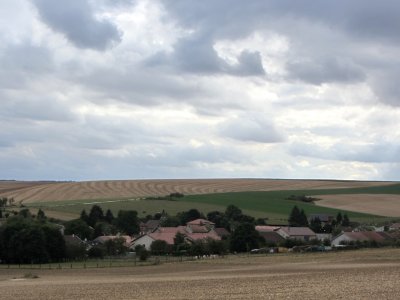 |
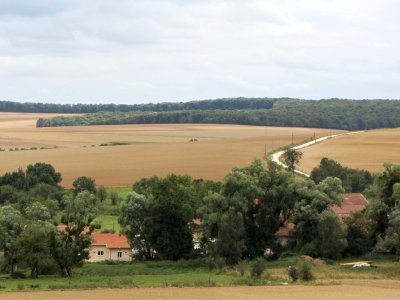 |
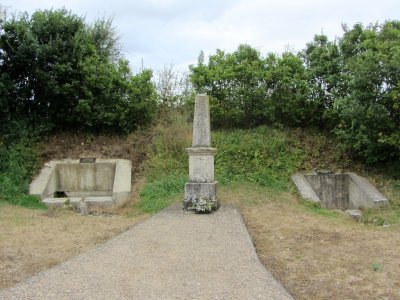
outside Chattancourt, two springs were chosen as memorials to local sons killed in action near here |
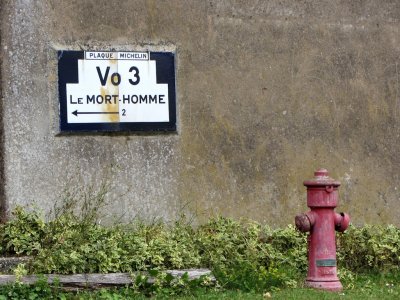
on the road to the Mort-Homme... |
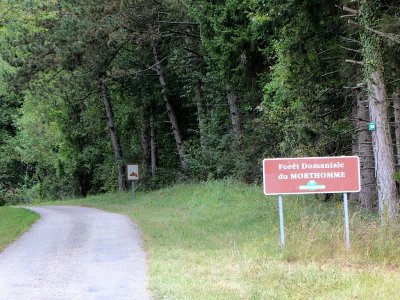
...a hill and forest famous for trench and tunnel warfare between French and German forces |
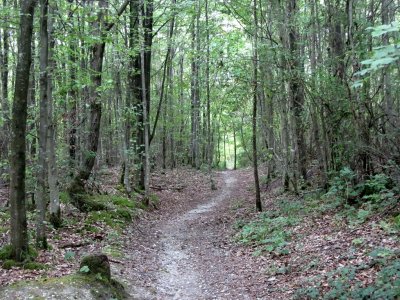 |
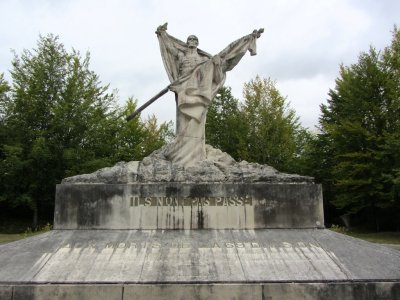
the monuments today mourn the dead on both sides... |
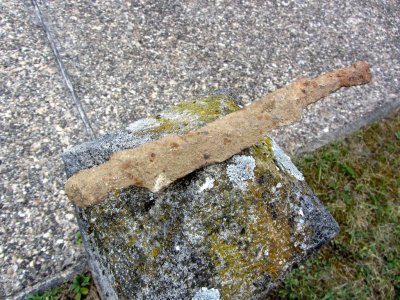
...and the surrounding woods still give up artifacts of the war |
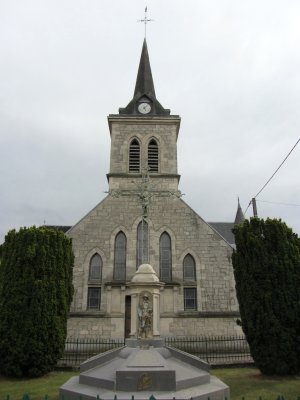
now we are in Avocourt, where the 104th Engineers worked around the clock to repair damaged roads |
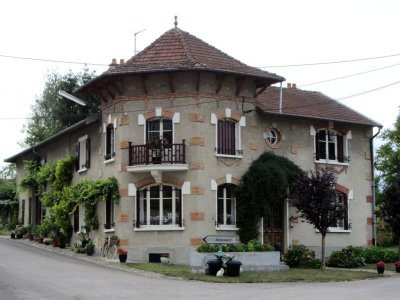
a smaller road out of town leads to... |
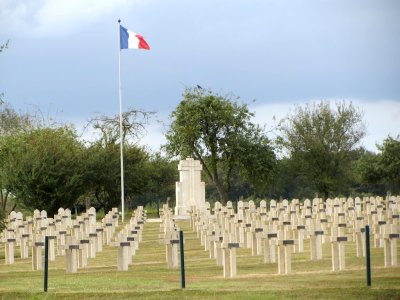
...another French military graveyard in a quiet setting... |
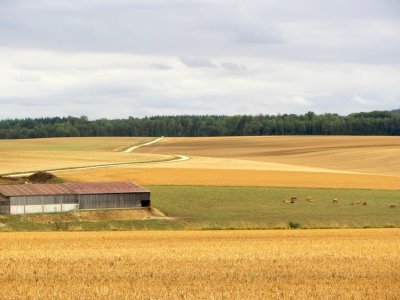
...overlooking fields of corn and other grains |
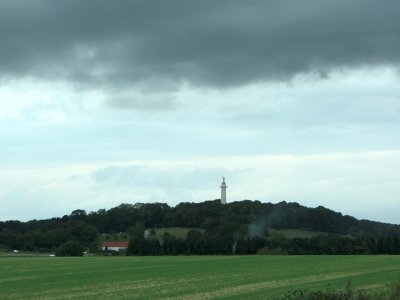
in the distance, the Montfaucon monument |
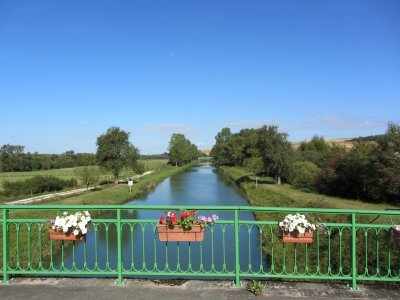
here is pretty Samogneux, another important village for road-building in WWI |
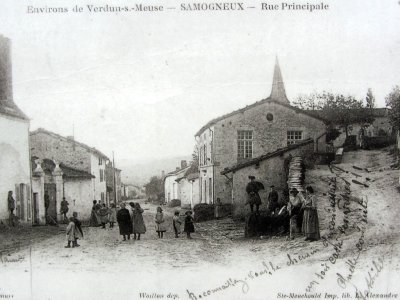
before the war, the village had lined the main riverside road... |
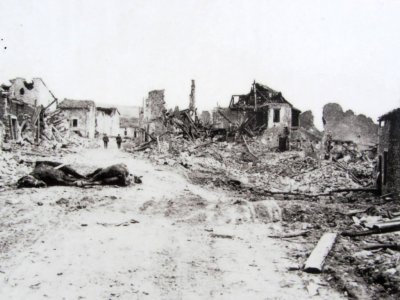
...but it was destroyed by battles in and around |
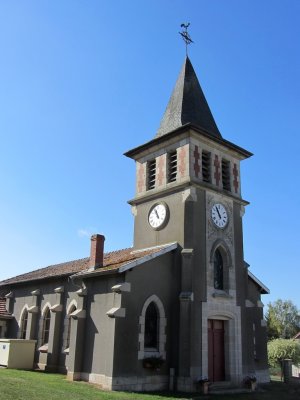
after the war, the village was rebuilt on adjacent land |
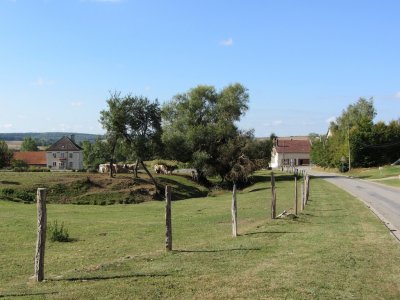
the next village north is Brabant-sur-Meuse, also part of the roadworks |
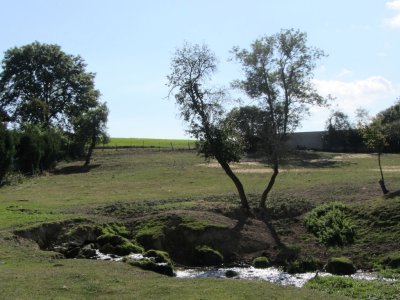
several springs emerge around town now |
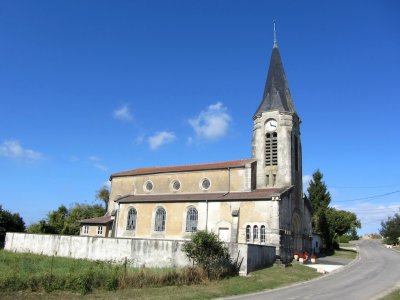 |
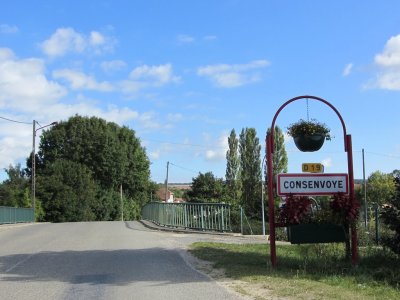
the village of Consenvoye was in the midst of late war fighting |
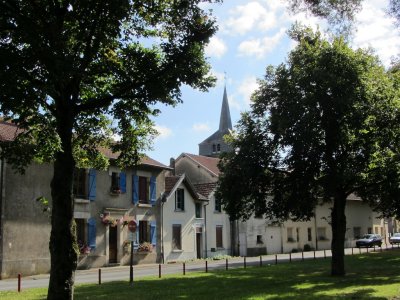 |
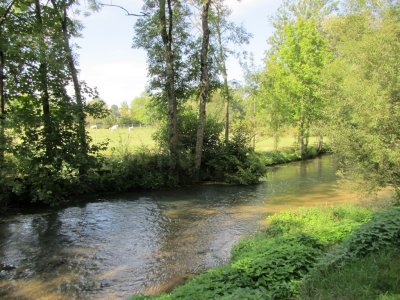
the Meuse and the Canal de l'Est slowly pass thru town |
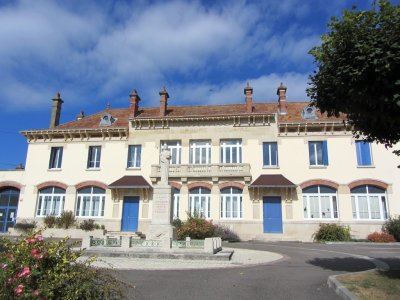 |
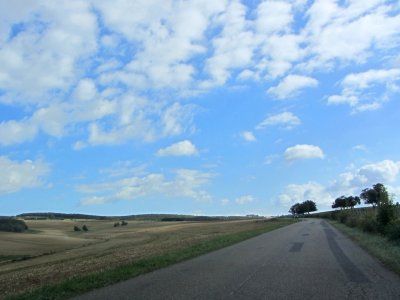
here's the road between Consenvoye and Damvillers... |
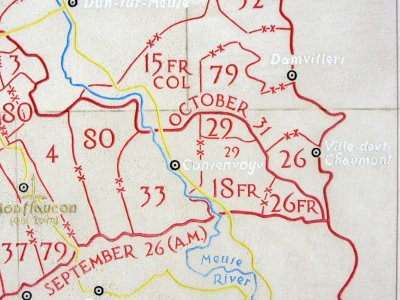
...where the 29th Infantry saw its heaviest fighting just two weeks before the war ended |
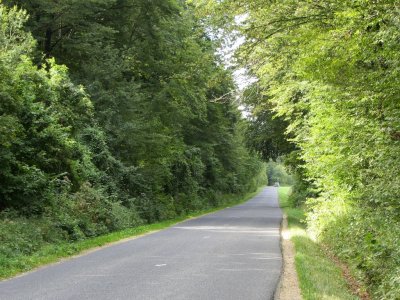 |
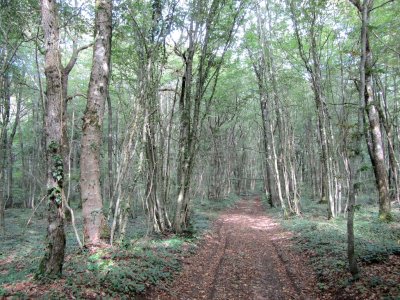
here's the Bois de Consenvoye, one of three named battles |
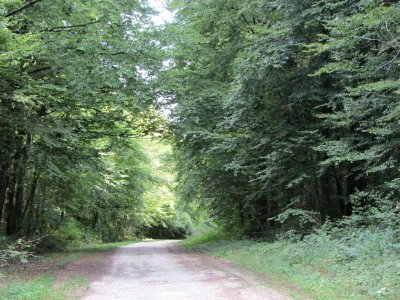
this road leads to... |
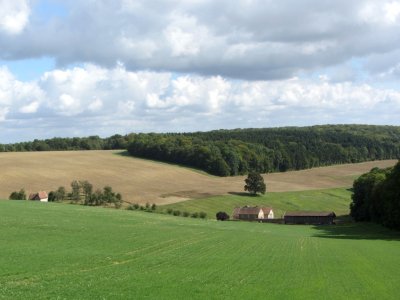
...the Molleville Farm, another named battle of the 29th AEF |
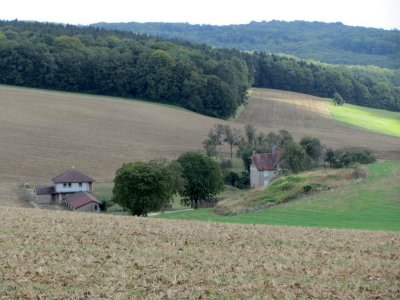 |
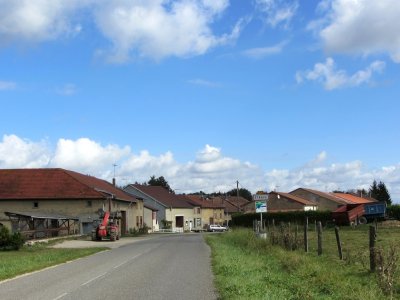
and here's the village of Étraye, adjacent to the woods named for another battle |
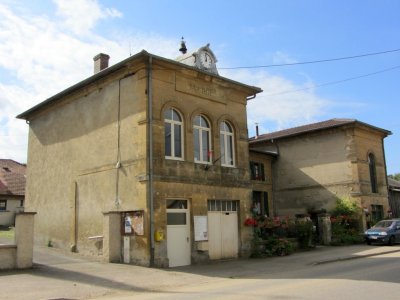 |
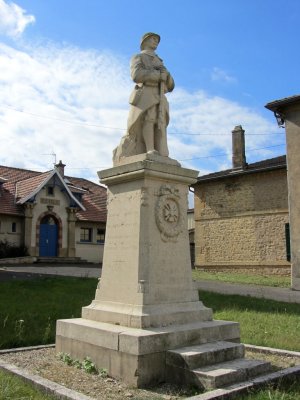
as everywhere in the region, sons of this village are honored for their sacrifice |
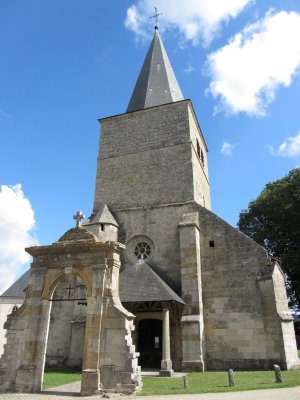
at last we reach Damvillers |
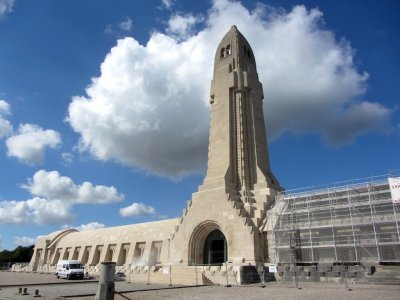
here is the French & German ossuary at Douaumont, holding the remains of over 200 thousand unknown Verdun dead... |
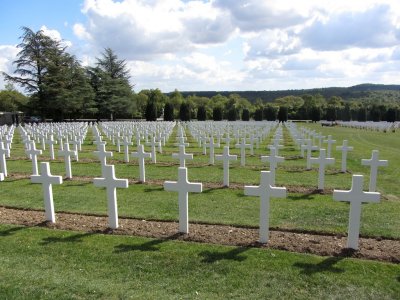
...and its adjacent cemetery of over 15 thousand graves |
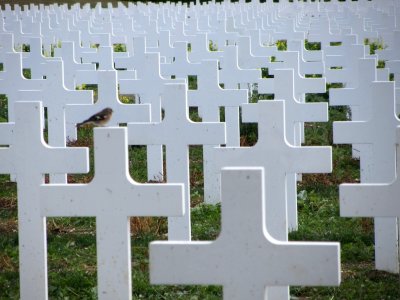 |
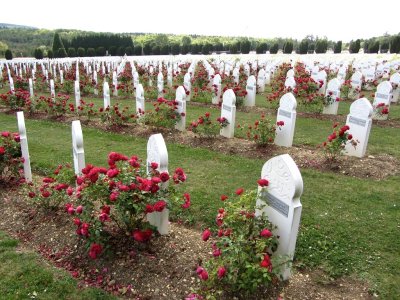 |
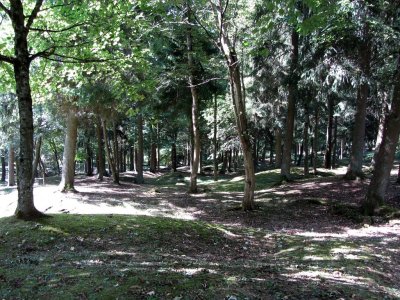
we pass another destroyed village (Fleury), left to regrow as woodland and a memorial |
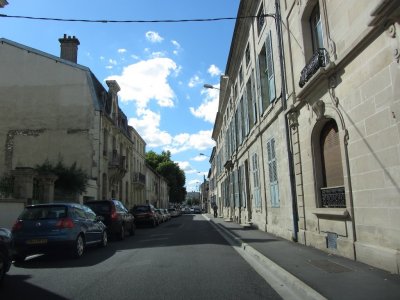
Jay's grandfather passed thru Verdun twice, en route to worksites in the area |
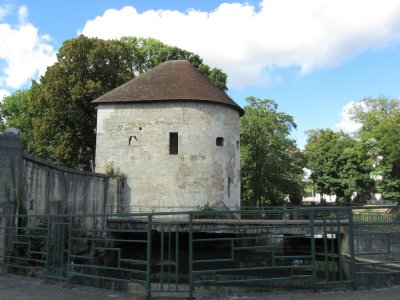 |
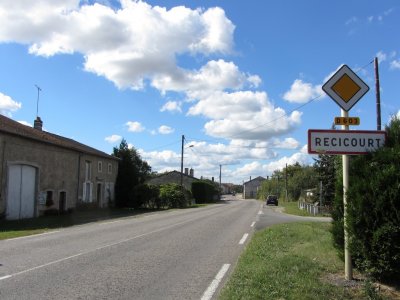
here is Récicourt, another road-building site behind the front |
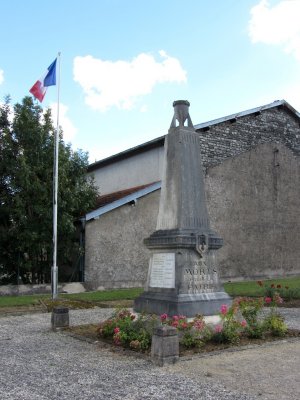 |
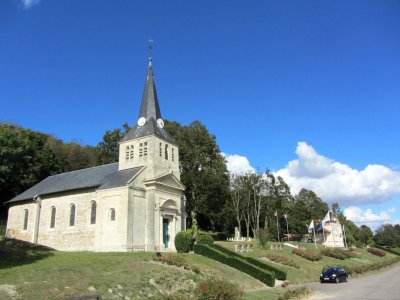
we pause in the rebuilt village of Vauquois... |
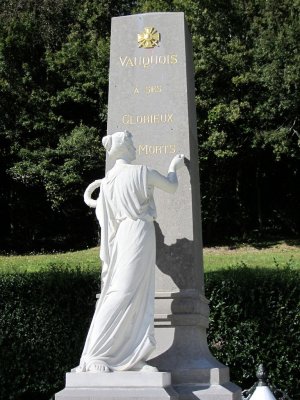
...site of a horrific series of battles around, in, and under the butte |
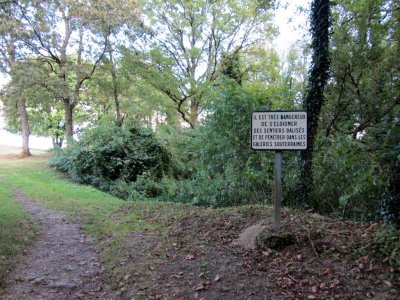
the original village stood on this mount |
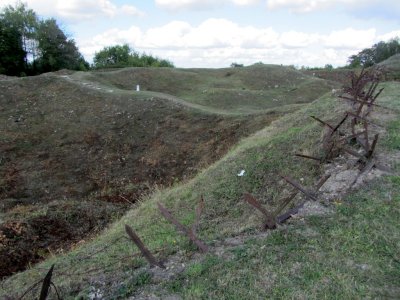
the church and all village buildings were destroyed in a series of bomb blasts from tunnels under the streets... |
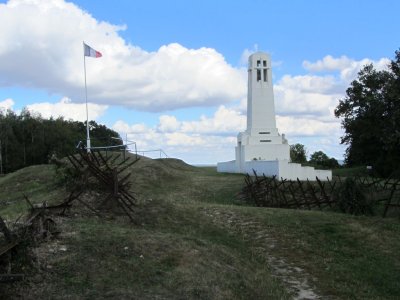
...which also took the lives of hundreds of men |
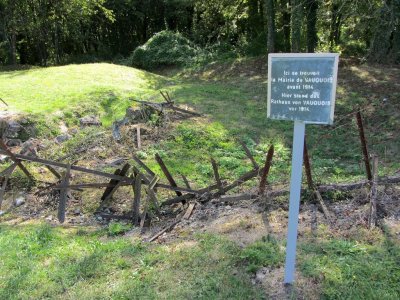 |
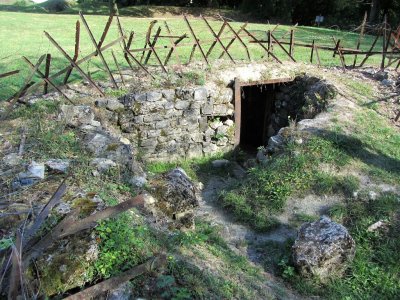 |
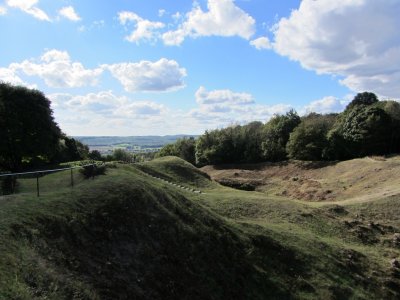
today the butte is split in two by the destruction |
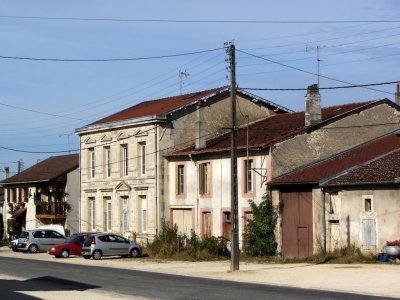
finally, we visit Haudainville... |
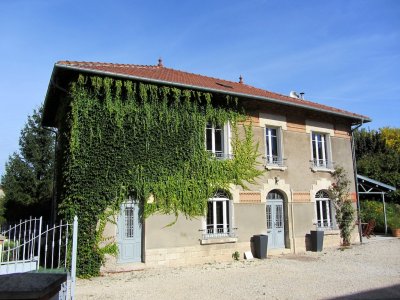
...another of the villages Jay's grandfather saw |
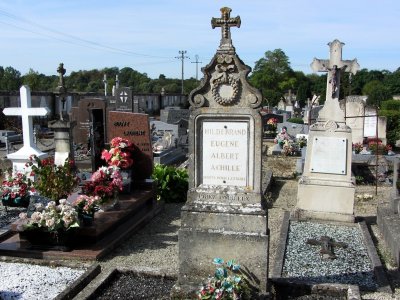
here, some of the French dead are buried in the communal cemetery... |
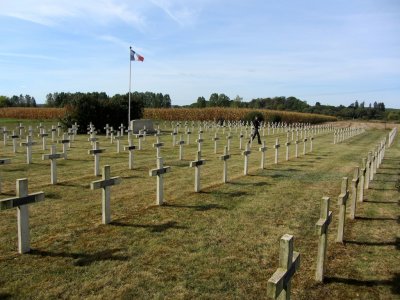
...but there is also a small military cemetery across the road |
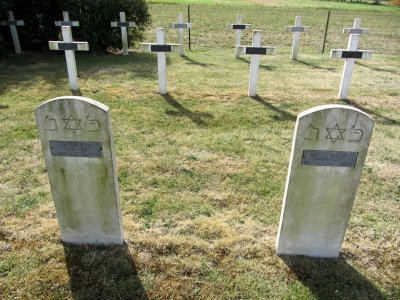 |
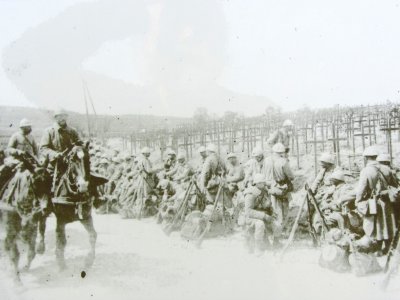
this scene from the war captures the period rather well... |











